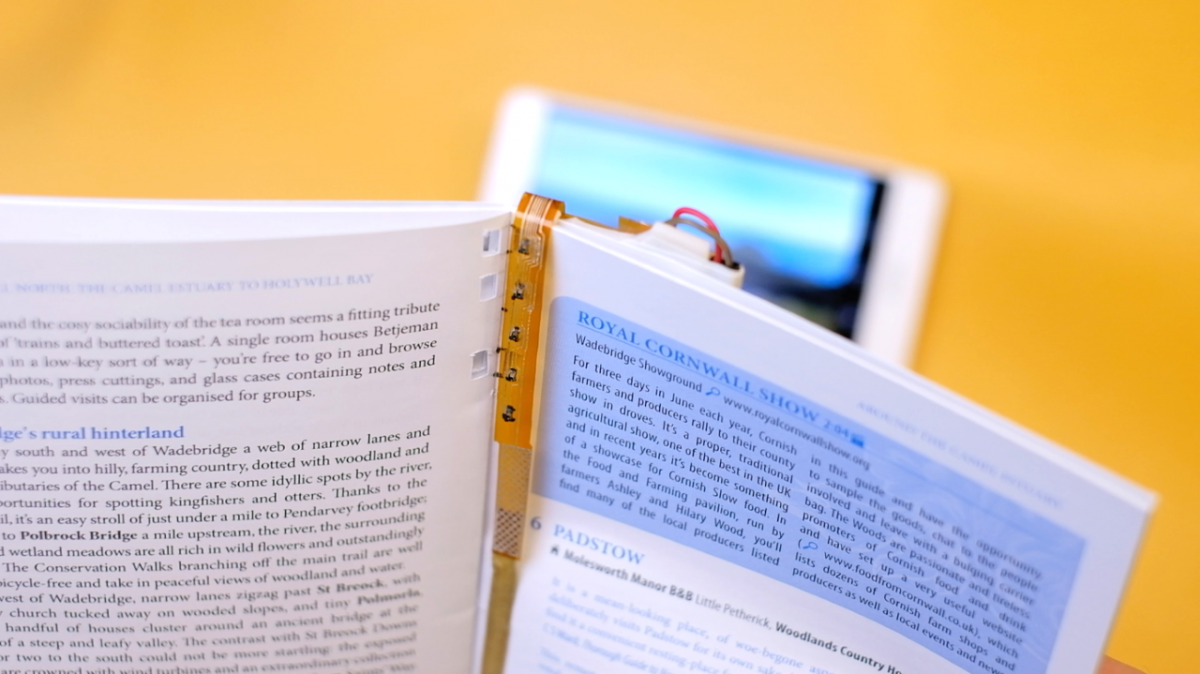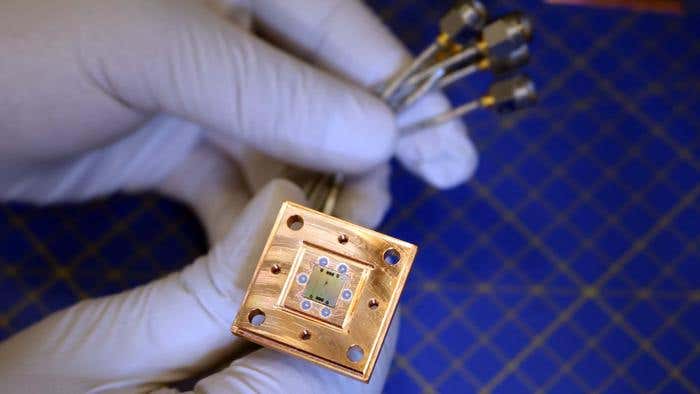Researchers breathe new life into paper books with the Magic Bookmark
Researchers have developed a new, cost-effective, ecological solution for augmenting the printed page with rich, up-to-date digital content.

[Oct 13, 2021: University of Surrey]
A new, cost-effective, ecological solution for augmenting the printed page with rich, up-to-date digital content. (Credit: University of Surrey)
The University of Surrey has developed a new, cost-effective, ecological solution for augmenting the printed page with rich, up-to-date digital content. The development overcomes one of the most significant advantages e-books have over paper books, helping paper maintain its strong position in its competition with electronic media.
Researchers at the University of Surrey's Advanced Technology Institute and Digital World Research Centre have designed an elegant and intuitive electronic system that allows the readers of a paper book to access related multimedia content by simply placing a bookmark on a page. The Magic Bookmark uses optical contrast sensors to discern a pattern printed next to the book's spine on each page. Because no electronics are embedded in the paper book, costs are minimized, and end-of-life recycling is enabled.
The research, published in the peer-reviewed Advanced Intelligent Systems journal, explores several ways of making the system. After a series of prototypes, the optimized version uses an optical barcode printed along page margins near the spine of the book and a detachable physical bookmark with embedded sensors. Small, convenient and versatile, the final system is simple to manufacture and can be detached from the paper to augment other compatible books.
The system advances the concept of barcodes and QR codes, meaning the sensors can read a wide variety of marks, including shades of gray and different colors. This makes the system customisable so that barcodes can be hidden within images or made almost invisible to the human eye, yet detectable by the sensors using a special off-white ink provided by industrial collaborator, Printcolor.
Prof David Frohlich, Project Lead and Director of the Digital World Research Centre at the University of Surrey, said:
"This solves a problem with our earlier attempts to instrument every page with electronics. The Magic Bookmark means books can be printed on regular paper as usual, yet the electronics move through the book as you read—on a humble bookmark."
Georgios Bairaktaris, Ph.D. researcher at the Advanced Technology Institute, said that "in Dr. Radu Sporea's team, we have been developing expertise in compact electronic devices for sensing and interaction with the real world. We focus on minimalistic solutions with a view of low-cost manufacturability and robustness during use. It's important to us that there are responsible disposal options at the end of products' life cycles as well."
Next, the team is adapting the system to use fully printed photosensors, which will make the Magic Bookmark indistinguishable from a conventional bookmark. They aim to investigate how more everyday objects can be augmented with printed electronics and used as interfaces to the digital world.
Learn more about the University of Surrey's undergraduate and postgraduate programs.
Like these kind of feel good stories? Get the Brighter Side of News' newsletter.
Tags: #New_Discoveries, #Bookmark, #Electronics, #Technology, #Science, #Research, #The_Brighter_Side_of_News
Joseph Shavit
Head Science News Writer | Communicating Innovation & Discovery
Based in Los Angeles, Joseph Shavit is an accomplished science journalist, head science news writer and co-founder at The Brighter Side of News, where he translates cutting-edge discoveries into compelling stories for a broad audience. With a strong background spanning science, business, product management, media leadership, and entrepreneurship, Joseph brings a unique perspective to science communication. His expertise allows him to uncover the intersection of technological advancements and market potential, shedding light on how groundbreaking research evolves into transformative products and industries.



